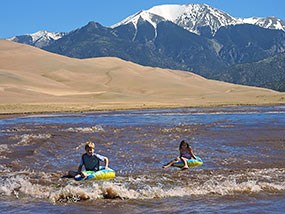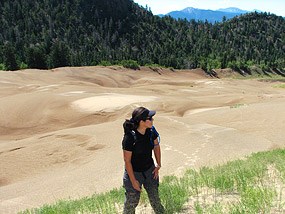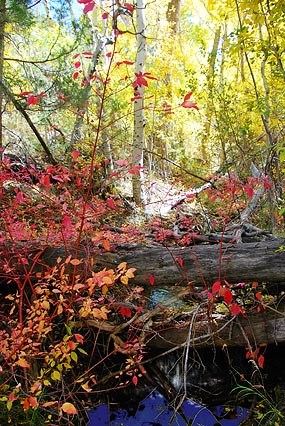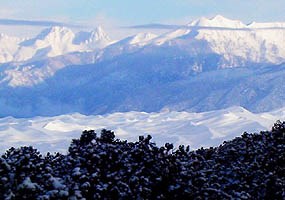
NWS National Weather Service Pinpoint ForecastsThe National Weather Service Weather Page for Great Sand Dunes National Park and Preserve has an interactive forecast map, radar, and more.
Average Temperatures for Each Month of the YearSee the average temperatures and precipitation for each month of the year. This chart is based on data collected from 1951 to present in the main day use area. Other Weather DataThe Great Sand Dunes Weather Station displays current weather data for a station located near the Visitor Center. 
NPS/Patrick Myers Weather in Each Seasonsee also Conditions to Expect Each Month of the Year Spring can sometimes bring high winds, mainly in the afternoon. Temperatures may vary widely: highs may reach into the 60s F, or only into the 30s F with snow and an even colder windchill. Lows can also vary from the 40s F to the 20s F. March and April are the snowiest months of the year, but that is typically interspersed with warmer days in the 50s F to 60s F. In later spring when Medano Creek is flowing, snow or high winds are still possible...or there may be calm, sunny, swimsuit weather. Be prepared for any conditions in spring! Check Medano Creek conditions and forecast flow. 
NPS/Fred Bunch In summer, daytime high temperatures average 75-80 degrees F. However, sand surface temperatures can soar to 150 degrees F on sunny summer afternoons. Plan to explore mountain areas of the park and preserve during summer afternoons. Summer nights are surprisingly cool, thanks to our elevation of 8200' above sea level. Even in summer, warm layered clothing is recommended, as lows may drop into the 40s. After dark, a jacket or a blanket may be needed. Afternoon thundershowers are common in July and August with associated cool winds, heavy rain and lightning. Be prepared to leave the dunes promptly if thunderstorms threaten: lightning strikes are common and can be fatal. 
NPS/Patrick Myers 
NPS/Patrick Myers |
Last updated: November 13, 2024
